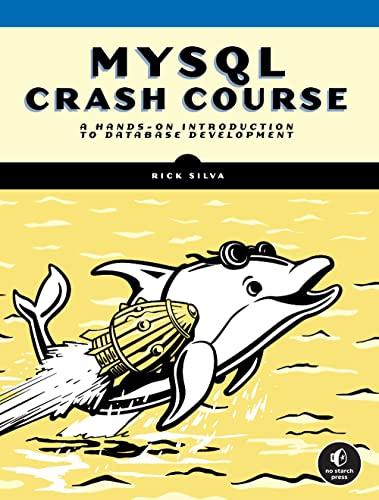Answered step by step
Verified Expert Solution
Question
1 Approved Answer
Write a program, in C, that keeps track of ratings for MP3 files and displays information about them. Requirements Along with the artist and title
Write a program, in C, that keeps track of ratings for MP3 files and displays information about them.
Requirements
- Along with the artist and title for each song, also get an integer from the user that represents the rating for the song. The order of input for each song should be artist, title, and rating, all on separate lines.
- You can assume that the artist and title are least 1 character long and no longer than 30
- Valid ratings are 1 to 5 inclusive.
- No other input is allowed.
- Put the input into a sorted doubly-linked list ,where the sorting is done by ascending by rating (e.g. 1 comes before 4). If two songs have the same rating, you can arbitrarily choose which song to put first.
- The sorting must be done such that each element is inserted into the proper location in the list in turn. Do not create an unsorted list and then sort the list afterwards (doing this would result in a failing mark for the assignment).
- At the same time, put the song into another separate sorted linked list, where the sorting is done ascending by artist (e.g. Coldplay comes before U2). If two songs have the same artist, you can arbitrarily choose which song to put first.
- The user will never enter a song with an artist and title that is already in the list (e.g. if "Beautiful Day" by "U2" is in the list already, the user will not ask you to enter it again).
- This means that you will have two separate head pointer variables and two separate tail pointer variables.
- Stop getting user input once an invalid artist of "." is entered by the user.
- You should ignore the song that had the invalid artist (i.e. don't put it into the linked list).
- After the input is complete, traverse the ratings-sorted linked list, displaying one song per line with artist (left-justified with a width of 35 characters), title (left-justified with a width of 35 characters), and rating (left-justified).
- Next, traverse the artist-sorted linked list, displaying with the same output format as the previous traversal.
- Next, obtain one song as additional user input in the same format as before. Search for that song in the artist-sorted linked list.
- If there is a match of artist, title, and rating, prompt for a new rating.
- If the rating is changed, update the artist-sorted linked list with the new rating. Then delete the song from the rating-sorted linked list and re-insert it.
- If the rating is unchanged, do nothing.
- The rating will always be a valid rating between 1 and 5 inclusive (e.g. I won't test your code by entering a rating of -4).
- If there is not an exact match, simply ignore the change and continue with the next step (i.e. just redisplay both linked lists).
- If there is a match of artist, title, and rating, prompt for a new rating.
- Redisplay both linked lists as before.
- Once completely done, you must free all allocated memory.
Additional Functions
- Create the findSong() function. It returns NULL if a song is not found or it returns a pointer to the node containing a song, if both the title and artist are matched (with a case-sensitive match, so you can use strcmp for this). It takes three parameters:
-
- songNode *head: head of list
- char *artist: pointer to null-terminated string containing artist
- char *title: pointer to null-terminated string containing title
- If only the artist or the title are found but both are not found in the same node, the song is not found.
-
- Create the deleteNode() function. It deletes a node, using three parameters:
-
- songNode *node: node to delete
- songNode **head: pointer to head of list
- songNode **tail: pointer to tail of list
- The key to this function is relinking pointers around the node before deleting.
- If node is NULL, it returns immediately.
- It returns nothing.
-
Other Requirements
- The artist and title fields must be dynamically allocated to an appropriate size
- Do not get user input except as described in these requirements.
- Do not display output except as described in these requirements.
- Do not clear the screen at any time in this program.
- You must do error checking where necessary.
- If you detect an error, you should display an appropriate error message and take appropriate action.
- You can assume that all statements above that have the phrase "will be" in them will be true when testing is done.
- It must not use global variables.
- It must not use goto.
- Be aware that malloc() does not support C++ strings so you still can't use them in this assignment.
Step by Step Solution
There are 3 Steps involved in it
Step: 1

Get Instant Access to Expert-Tailored Solutions
See step-by-step solutions with expert insights and AI powered tools for academic success
Step: 2

Step: 3

Ace Your Homework with AI
Get the answers you need in no time with our AI-driven, step-by-step assistance
Get Started


